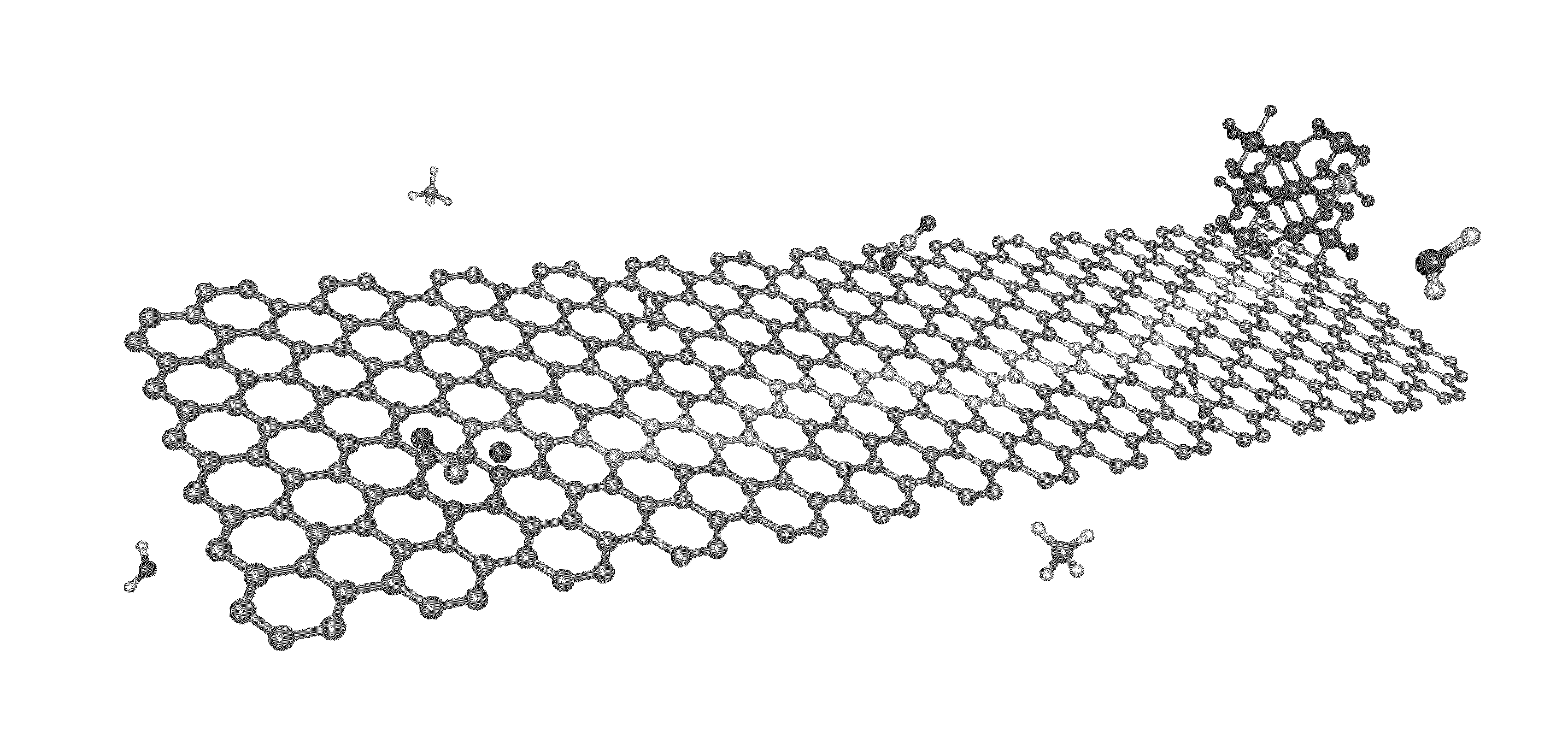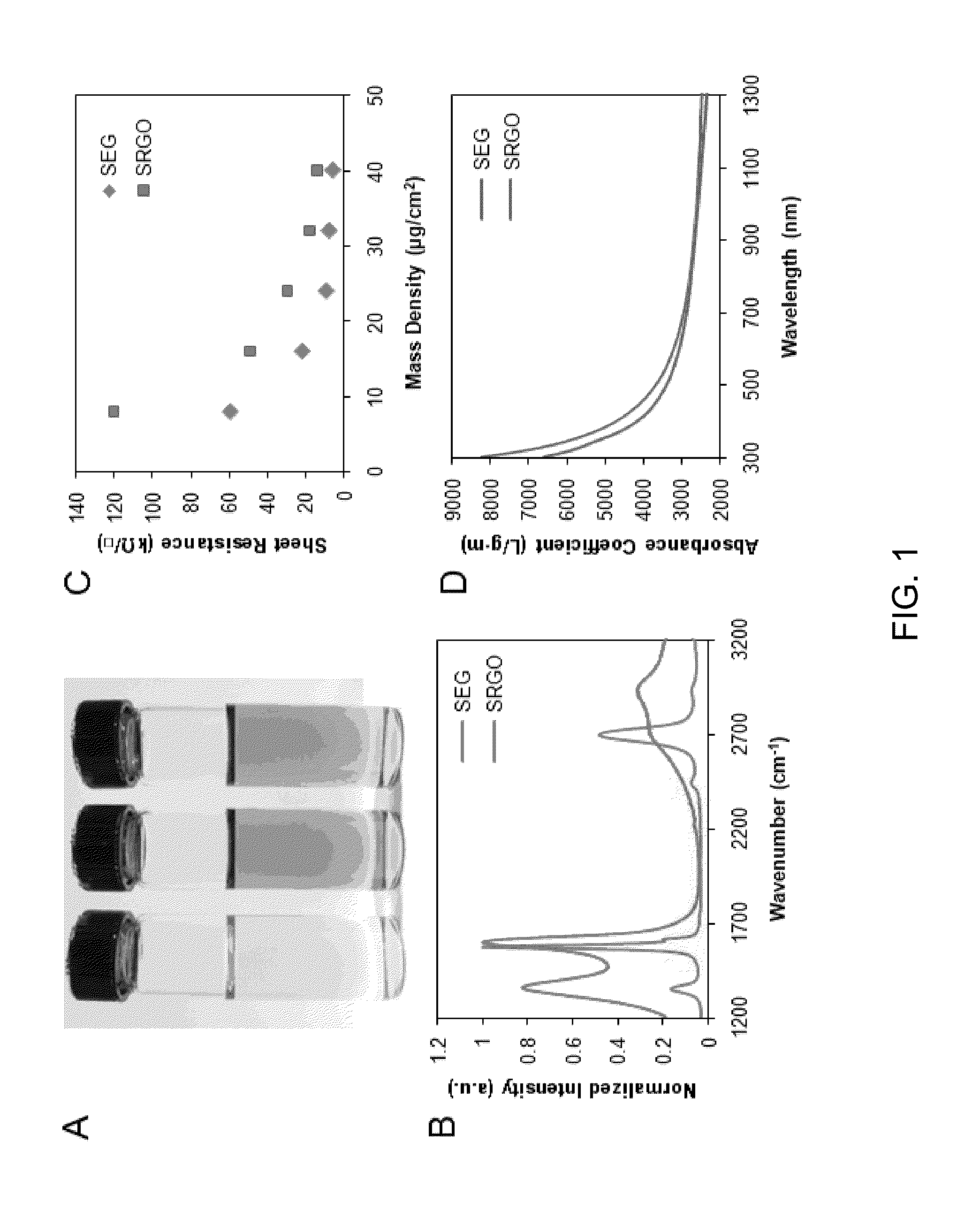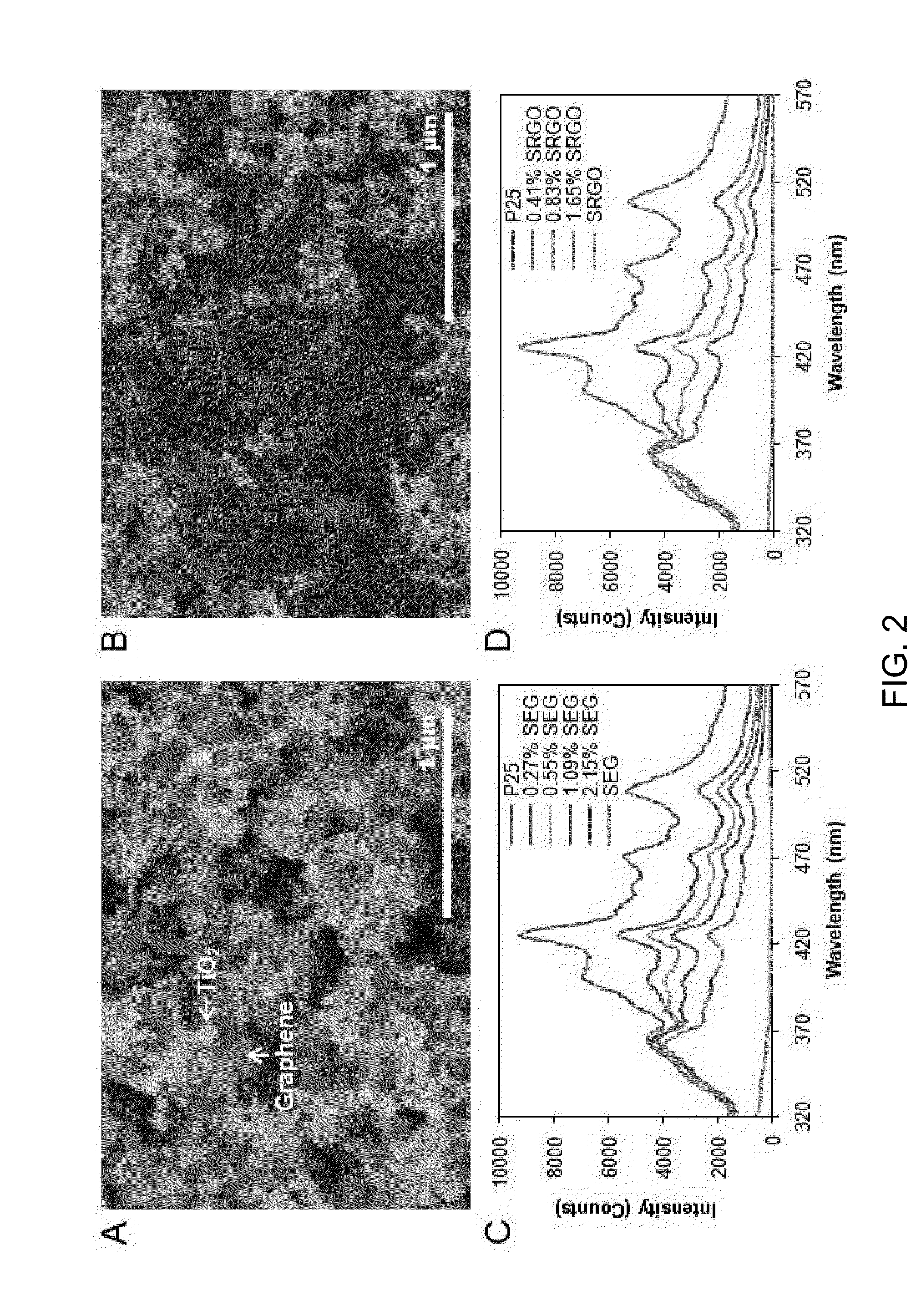Methods of making non-covalently bonded carbon-titania nanocomposite thin films and applications of the same
a carbon-titania nanocomposite, non-covalent bonding technology, applied in the field of carbon-titania nanocomposites, can solve the problems of unaddressed need in the ar
- Summary
- Abstract
- Description
- Claims
- Application Information
AI Technical Summary
Benefits of technology
Problems solved by technology
Method used
Image
Examples
example one
1. Graphene Synthesis and Characterization
1.1 Solvent Exfoliated Graphene (SEG) Synthesis
[0104]In this example, 2.5 g of natural graphite (Asbury Carbon, 3061) was added to 50 ml of N,N-dimethylformamide (DMF, Mallinckrodt Analytical) and sonicated in a
[0105]Bransonic 3510 tabletop ultrasonic cleaner for 3 hours at 40 kHz and 100 W. These solutions were then combined into 250 ml centrifuge tubes and sedimented in a large volume centrifuge (Beckman Coulter Avanti J-26 XP Centrifuge) for 4.5 hours at 7500 rpm, or an average relative centrifugal force of 6804 g. The graphene concentration of this SEG solution, 0.013 mg / ml, was determined by measuring the difference in filter (Whatman Anodisc, 0.02 μm pore size) masses after filtering both 20 and 50 ml of the solution.
1.2 Graphene Oxide (GO) Synthesis
[0106]As a comparative example, GO was produced using a modified version of Hummers method. 5 g of natural graphite (Asbury Carbon, 3061) were added to 115 ml of concentrated sulfuric acid ...
example two
1. Low Dimensional Nanomaterial Synthesis and Processing
[0130]Single walled carbon nanotubes (SWCNT, Carbon Solutions Inc, P2) were dispersed at 0.5 mg / ml in 1 weight % ethyl cellulose (EC)-ethanol solutions using a Fisher Scientific sonic dismembrator 500 for 1 hour at 35% power. Solvent exfoliated graphene (SEG) was produced from natural graphite flakes (Asbury Carbon, 3061) in 0.25 weight % EC-ethanol solutions using a Bransonic 3510 tabletop ultrasonic cleaner for 3 hours at 40 kHz and 100 W. This sonicated dispersion was then collected into 250 mL centrifuge tubes and sedimented in a large volume centrifuge (Beckman Coulter Avanti J-26 XP Centrifuge) for 4.5 hours at 7500 rpm with an average relative centrifugal force of 6804 g. The resulting supernatant consisted primarily of single and few layer graphene sheets at about 0.1 mg / ml, as measured using a Varian Cary 5000 spectrophotometer and an absorbance coefficient of 3397 L / g·m at 550 nm.74
[0131]FIG. 17 shows an atomic force...
PUM
| Property | Measurement | Unit |
|---|---|---|
| Temperature | aaaaa | aaaaa |
| Temperature | aaaaa | aaaaa |
| Time | aaaaa | aaaaa |
Abstract
Description
Claims
Application Information
 Login to View More
Login to View More - R&D
- Intellectual Property
- Life Sciences
- Materials
- Tech Scout
- Unparalleled Data Quality
- Higher Quality Content
- 60% Fewer Hallucinations
Browse by: Latest US Patents, China's latest patents, Technical Efficacy Thesaurus, Application Domain, Technology Topic, Popular Technical Reports.
© 2025 PatSnap. All rights reserved.Legal|Privacy policy|Modern Slavery Act Transparency Statement|Sitemap|About US| Contact US: help@patsnap.com



